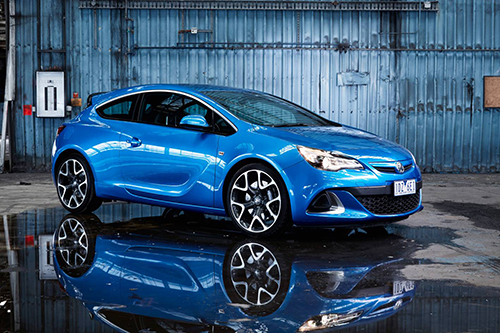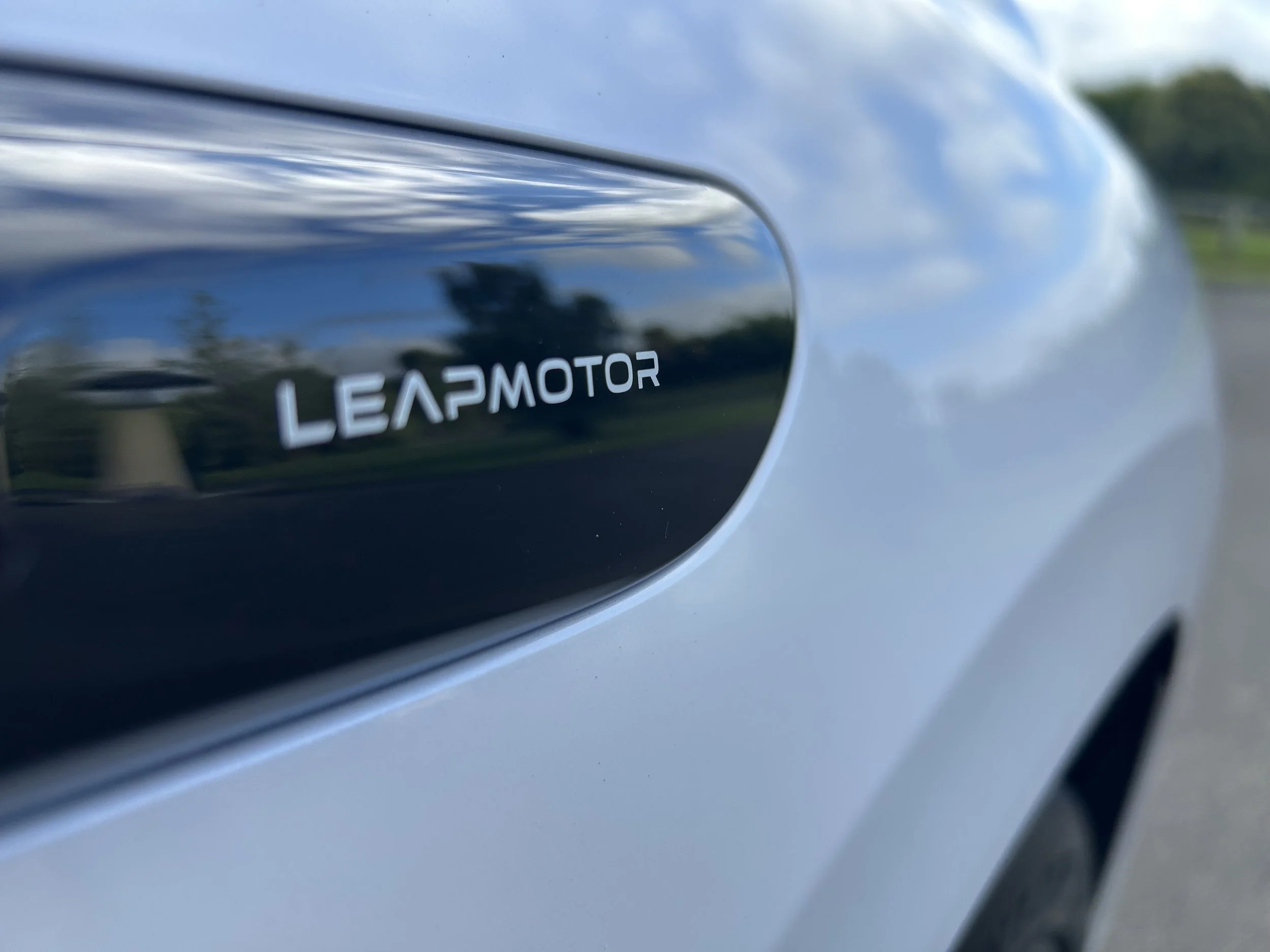Hot Astra puts fire into small Holden line
/European Holdens are back, and the charge is being led by a couple of VXR hotties. On test is the Astra VXR, a 2.0-litre turbocharged performance flagship out to razz up the hatchback scene.
Against: Dated interior, not as dynamic as some.
For: Smashing looks, brilliant sports seats, involving engine, great grip.
Score: 3.9/5
HOW can the oldest be the newest? It’s a question that Holden fans keen on hot hatch performance and ignorant of the brand’s latest addition, this $49,990 Holden Astra VXR, are inevitably going to confront.
It’s all the result of Holden here finally picking up the pace with a product that’s been knocking around GM-world, in Opel and Vauxhall guise, for some years now.
The smart and slinky styling does a good job of disguising this car’s age, but a quick Wiki or Google check will reveal it’s older than it looks: This shape, in fact, first emerged from GM Germany in 2009.
It’s not quite old-school, but soon will be. This three-door shell is set to remain in production for another year, in fact, but nonetheless this market had only picked it up weeks before a whole new generation of the more utilitarian five-door hatch and wagon was revealed in Europe. Those models will be here in 2016.
You might wonder if this ‘fresh’ offer a car is already too wearied by age and also wonder what is Holden trying to achieve with a model whose Aussie-ness is confined to a mere badge swap.
Alternately, you might delight in knowing that we’re finally in receipt in one of the better products from OPC – that’s Opel Performance Centre – a white-knuckle performance coupe promising rocketship performance and European cachet.
Styling, image:
There’s no better place to look than right here for testimony to how well smooth contours and scalloped lines can stand the test of time; it might be troubled to pass muster as the absolutely newest thing on the block – not least because we’ve seen this shape before, years ago when it was briefly here as an HSV car.
Yet despite that familiarity it is still pretty cool to look at, not least because it is loaded with all the requisite performance styling enhancements you’d expect on a European hot hatch, from winglets and emboldened sills to over-sized 20-inch rims. Wider tracks and a lowered ride height enhance its air of muscularity. It mightn’t look as youthful as some, but it still looks good for a bit of biffo.
Sliding inside, though, there are telltales that, when this car was new, we were all chatting about something new and different from Apple: A weird concept called an App store.
Actually, apps are a good example: Latest Holdens can cope with a lot more third party software than this car.
Not only that but the good-sized seven inch media system isn’t touch-operated, instead relying on a confusing complicated layout of buttons and menu controls. I mean, when you have a joystick that isn’t and a push-button prompt that won’t … well, it’s not the best when you’re trying to extract some use from the clunky sat-nav and the MyLink information system.
Other drawbacks of it being from a certain age is that there’s no reversing camera, just overly-sensitive parking sensors. Also noticeable about the cabin is that it is neat and well-constructed yet not as sporty or swanky inside as it should be. The hard plastics are a real downer, the silver inserts on the dashboard garish.
On the other hand that sports steering wheel and topline Recaro seats upholstered in Nappa leather, with eight-way power adjustment, are just fantastic.
Powertrain, performance:
This is where it gets serious. Back in its youth this car was more powerful than just about anything else in its category. Six years on, it still stands good comparison with those rivals.
And it’s just not just the naked numbers – 206kW and 400Nm – that do the talking for this 2.0-litre turbocharged four-cylinder. The power is prodigious, with a big tasty slab of torque from low in the rev range. In terms of pure on-paper shove, this propels it past the likes of the Toyota 86 and the Ford Focus ST and on par with a Renault Sport Megane 265. The claimed 0-100kmh time of 5.9 seconds is pretty impressive, but more of an eye-opener is its mid-range shove; you can easily find this car on the ‘wrong’ side of our most lenient posted speed limit.
There’s some lovely snarl and off-throttle grumble coming from under the bonnet and out of that relatively big bore exhaust to accompany the action. When the rev counter is hitting above 3000rpm, though, you lose a lot of that and instead it sounds similar to a particular homeground rival, the Renault Sport Megane, with a lot of turbo whoosh.
Thirsty? This Holden has idle-stop, but don’t take the official overall economy rate of 8.0L/100km too seriously. The moment you so much sneeze on the throttle, it’s blown out of the water.
Gearbox choice is one some will enjoy and others simply won’t want to endure: A good old-fashioned manual. Maybe Opel will in future invest in a direct-shift gearbox – from looking at the healthy takeup for DSG Golf GTi hatch’s, you can see why it should – but, really, although the Astra would benefit from paddle-shifters, the transmission it has is not really a burden; the stick has a solid but meaningful shift and though the clutch action is slightly on the heavy side, it’s easy to live with.
Driving appeal:
Let’s see: Front-drive, lots of power … so, inevitably, copious arm-stretching, muscle-straining torque steer with a decent dose of wheelspin for good measure as well, right?
Yeah. Nah. I mean, it’s obviously skating close to as it can get, power-wise, yet there’s actually not too much tugging at the steering wheel under acceleration, on firm dry tarmac at least. It did get a bit more, well, exciting on a wet road, but never to the point where it seemed as those we’d need to call in an exorcist to rid it of demons.
I guess primarily that’s testimony to the effectiveness of the HiPerStrut front suspension design and mechanical limited-slip differential, though I suspect the 245/35-series Michelin Pilot Super Sports are also expressing influence.
These are serious tarmac-biting boots – albeit expensive ones, too. And while such soft compound rubber makes for a tremendous amount of grip, the wear rate from running on our coarse chip roads is likely to be accelerated from that Opel would expect to get from driving on smooth European surfaces.
This isn’t just an autobahn blaster, of course. There are plenty of great hill roads in Europe and I daresay this model’s development phase included a lot of time on the Nurburgring, a circuit of 1000 corners. Anyway, it is well equipped to take on far from gentle bends at far from gentle pace. The lowered, stiffened and widened chassis does it’s bit, but it also benefits from an adjustable suspension that can be made extremely firm for excellent body control.
The latter handily operates through the VXR drive mode; a pushbutton access that in addition to sharpening the dampers also alters throttle and steering sensitivity. To be sure, even in its comfort mode the Astra rides firmly but acceptably, but going into VXR makes it perceptibly more feral. But it’s more fun that way, too, even in town.
What could improved upon? Not the brakes. GM also shops at the Brembo store and seems to like to pluck from the top shelf; this car has huge stoppes that offer impressive feel, retardation and consistency. But maybe the steering: There’s something of a vagueness here; it’s not wishy-washy but neither does it have that fingertip feel of the best, even though the Sport and VXR functions do alter its action.
So it’s mainly fun. But it’s not so easy to live with simply through being a three-door car. Those doors are long and heavy, so getting in and out demands care and space. In fact, in tight parallel parks, like at our local supermarket, you’ll always be on the lookout for the end-of-rank spots that have extra leeway, else there might not be enough room to get the door open far enough.
Fall into the heavily bolstered chairs and it’s a stretch to reach back for the front seat belts; rear passenger knee-room is also compromised by these bulky race-style chairs, yet it’s hard to dislike the front seats all the same. The driver’s pew offers oodles of adjustment, including lumbar, side and base bolstering, base angle, upright and slide. And they're form-fitting and comfortable.
A 380 litre boot will struggle to take a full family-load of luggage, but with this likely to serve mainly as a one to two person car, it’s probably good enough.
How it compares:
The Astra VXR is well-priced against its only like-configured three-door equivalent, Renault’s Megane RS, and is more enlivening that Ford’s Focus ST, but the pumping performance and hot exterior styling cannot disguise that it has arrived with an age disadvantage; it would be easier to accept if that centre console layout wasn’t so messy, for starters. However, we’re pumped by the VXR programme – when a dated car can still feel so competitive, imagine how the inevitable all-new product is going to present?
















